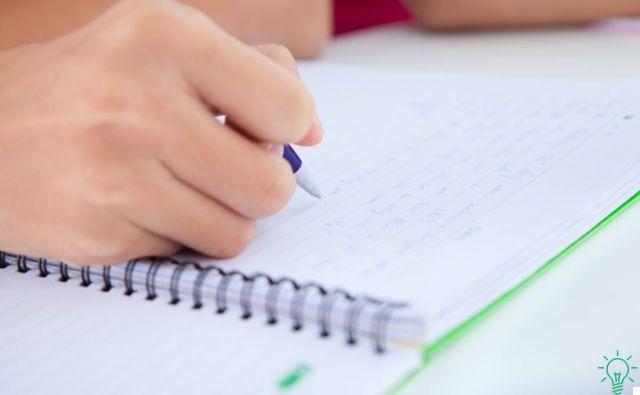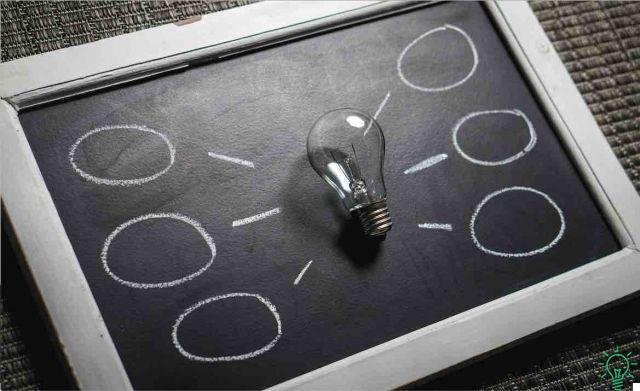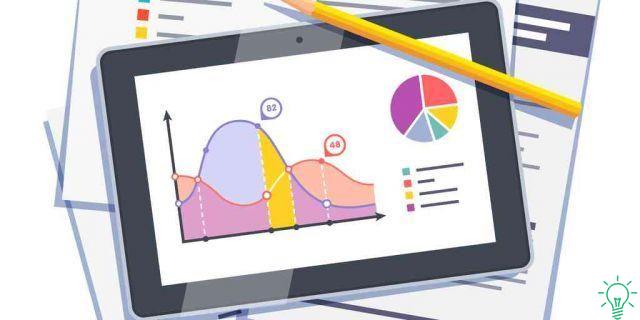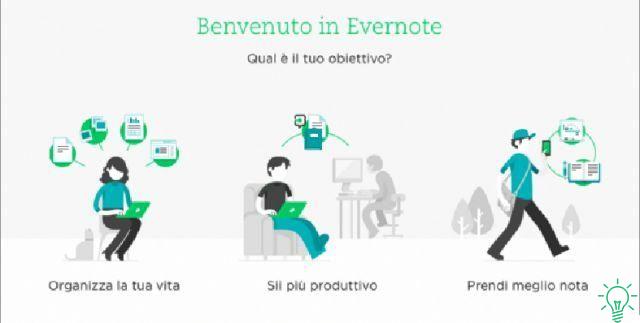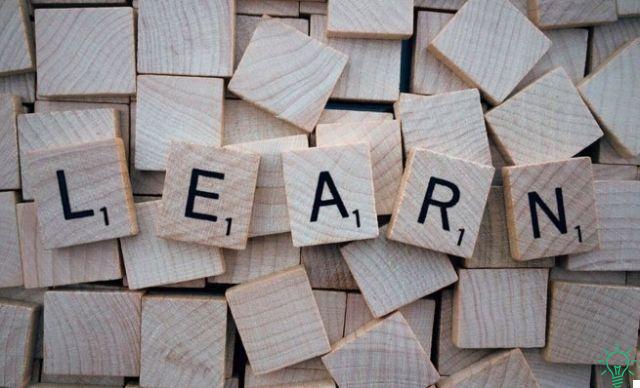![Quick Read: Why and How It Works [The Ultimate Guide]](/images/posts/f6e97c3a4760fe28515d79f6afa3d0b7-0.jpg)
La quick reading is every college student's dream.
Between doing your first reading of a 700-page book in 2 hours or 2 weeks there is really a huge difference, and quick reading it can save you whole afternoons of study.
For this reason, together with skimming (ie the so-called "orientation reading") I recommend quick reading among the initial strategies of an effective university study method.
In this article we will see:
- When you need to use speed reading techniques
- How you have to use them
- What resources can you use to start reading quickly
How fast?
Even 100% more than you do now! And you don't need to practice years - I'll teach you a quick reading technique that's so simple you can learn it in no time!
Quick reading to study
You can read quickly a novel, e-mails, today's newspaper, or whatever else you want.
But the most useful moment of the quick reading techniques that's when you start studying.
Imagine having to walk into uncharted territory.
If I could first fly over it at low altitude with a plane to draw a map of it, wouldn't it be much easier and faster?
That's exactly what you do with speed reading and skimming techniques.
When you learn a read quickly, you also start studying fast!
You no longer start from page 1 and then proceed slowly, sheet by sheet, and find yourself at the end of the second chapter the week after, that you have already forgotten everything!
Instead, build the overall picture immediately and very quickly, and this speeds up the whole subsequent study phase.
Because with the quick reading you have made the map of the route.
Now, maybe you are wondering ...
Quick reading: is it difficult?
No!
Quick reading, at least until 400 words per minute (consider that it is already double the normal speed), it is not difficult at all.
It only takes a few hours to learn how to apply the first rudiments.
Beyond 400 words, things get difficult, and you need a lot of practice, with which however you can realistically reach 1000 words per minute.
“One moment Anthony! I saw a quick reading course that gets you to 3 and even 5 words "
So, before we move on, let's develop some healthy skepticism.
Quick reading: does it work?
“I took a quick reading course and then I read War and Peace. Talk about Russia ”. Woody Allen.
The industry of professional trainers, knowing well the (understandable) weakness of the students for whatever shortcut is presented to them, does not hesitate to promise reading speed of 4 or even 5 thousand words per minute.
Obtainable of course by attending a nice 2-day quick reading course, at 500 euros per day.
So, if you happen to go to a speed reading class, bring a book from home, give it to the trainer, and ask him to read there, in front of you, the 3 or 5 thousand words per minute he promises you. Then tell me how it went.
Of course, it's not impossible to greatly increase your reading speed, and if you're interested you can read my article on why speed reading works.
But you certainly can't increase it to 3-5 thousand words per minute, and much less need a thousand euros to learn how to read quickly.
And then, "quick reading" versus what? Have you ever wondered what the normal reading speed is?
Fast Reading vs Normal Reading
Not all texts are the same. So, to differentiate between normal reading and quick reading, when you study you must always keep in mind two variables:
- How difficult is the book you want to tackle with quick reading
Quickly reading Mickey Mouse is not like quick reading of quantum mechanics, and in between there are at least fifty shades of gray. - How well do you know the topic you want to read quickly
If you don't study medicine, chemistry or pharmacy, reading a pharmacodynamics text can be quite indigestible. While if you are a doctor and you quickly read a Java programming text you may need an aspirin to recover.
I'll give you some general indications:
- In Spain, one undergraduate can read a "normal" book at around 220 PAM.
- From 300 PAM upwards, that is 30% more than the average, we can speak of fast reading
PAM is the unit of measurement of the reading speed, and is the acronym for Words Per Minute.
Quick reading: how much time do you save!
Now, yeah read 30% faster it is in itself a nice improvement: it means for example that if you now read 10 hours a month, you will save a couple of hours of time every month for the rest of your life.
And the beauty is that with fast reading techniques you can increase your reading speed not only by a quarter, but also by 3 or 4 times. As I told you before, realistically up to 800-1000 words per minute.
With the result that you save enormous time.
When learning how to read fast though, it is vital that you worry about keep your level of understanding high as well some text.
Quick reading and understanding of the text
The level of comprehension is fundamental, because it marks the difference between a true speed reading technique and rolling the eyes on the book without understanding anything.
Those who criticize fast reading he often says that, if you read very quickly, you don't understand anything. And it is better instead to dwell calmly on each concept.
The truth is, you only lose comprehension of the text if you read too fast and haven't developed the technique for doing so well.
Because with fast reading, at least up to a certain point, understanding increases, it does not decrease !
And the reason is simple: increase concentration because it is an active and demanding reading.
Quick reading and concentration
Think about it:
Surely you have ever raised your head from the book after half an hour of reading and realized that you do not remember anything, as if you haven't read it at all.
Like when you drive on the highway for miles, at cruising speed, without even realizing that you are driving.
The reason is that when you do things on "autopilot" it's that easy your brain get distracted and go elsewhere.
But when you learn to use speed reading techniques, your brain also learns to read while staying alert and active!
And that's why I recommend quick reading techniques as one of the strategies for maintaining mental focus when studying.
Quick reading: physiology
When you read a book, the eyes read alternating between two phases:
- Saccade: il fast movement from point to point on the text
- Fixation: moment in which the eyes are still and there is the real perception of the words
To see them live, just look carefully into someone's eyes while reading a book.
The saccades are mostly in the direction of the text, except for some that sometimes go in the opposite direction, to re-read what has just been read. For this reason they are called regress saccades.
So when you read your eyes they skip from one point to the other of the line using the line itself as a reference, and staying on it through a series of brain mechanisms that automatically recalculate the landing zone each time.
Every now and then, bounce backwards to make a saccade of regression. That is, they move in this way:
![Quick Read: Why and How It Works [The Ultimate Guide]](/images/posts/f6e97c3a4760fe28515d79f6afa3d0b7-1.jpg)
Quick reading: the 4 aspects to improve
To learn how to read quickly, you must first work on the physiology of your eyes' behaviors, and then on these 4 things:
- Width of the fixation point
That is, how many words you see at the same time when the eye is fixed on a point - Fixation time
Which is what is necessary to perceive the meaning of what the eye is staring at. - Speed of the saccades
That is, how long does it take for the eyes to move from one point of the text to another - Direction of the saccades
That is how many times your eyes go back to reread.
There is a very simple way to improve each of these 4 aspects, and now we will see it.
Quick reading technique: the pointer
And here we are at the first of yours quick reading exercises and to the "pointer technique"; the name is cryptic, but in reality it is a very simple fast reading technique that will allow you to read faster immediately.
All you have to do is go back to when you learned to read, that is presumably in the first grade.
See, based on what we said about eye movements, to learn how to read eyes quickly they have to:
- Instead of being pushed forward, have something to chase.
- Instead of hopping, move on rails
- Being "forced" not to Do not come back.
These three results are easily achieved reading with your finger (which acts as a "pointer"), that is, sliding your finger under the words you read, just like in first grade.
For comparison with the image above, thanks to your finger your eyes move like this:
![Quick Read: Why and How It Works [The Ultimate Guide]](/images/posts/f6e97c3a4760fe28515d79f6afa3d0b7-2.jpg)
Why the pointer technique is effective
This quick reading technique therefore works precisely because it conditions the eyes in such a way that they move differently.
That is:
- In normal reading
The eyes are continually pushed forward without chasing anything, because the words are static. At each jump they have to recalculate, even if automatically and very quickly, the next landing area. - In quick reading with the pointer technique
The eyes chase the finger increasing their speed; moreover, the "landing zone" is more easily calculated and regression saccades are avoided.
The result is that you read faster and fatigue a lot less.
And if you think you feel stupid to read with your finger, consider that at least two presidents of the United States (Kennedy and Roosevelt) used to use their finger to quickly read the enormous amount of documents that were submitted to them every day.
How to use the pointer technique
Referring to a "normal" book, so to speak, a book that you normally read at 220 PAM, I suggest you start using the pointer technique by sliding your finger under the line at the speed of one line every 2 seconds, for books that have about 10 words per line.
In this way you will see that in a few minutes you will be able to read at a speed of 300 words per minute.
You can then increase it to plus or minus 350-400, and when your eyes get used to it, you can also do without the finger.
Beyond 400 words per minute you will need additional and different speed reading exercises. But first it gets to 400, and then we talk about it!
Reflections on fast pointer reading
If you want to deepen the quick reading, at the end of the article you will find some resources.
In the meantime, however, I wanted to tell you about this first, simple quick reading technique for two reasons:
- The first reason is that this quick reading technique is very simple
So you can really get your reading speed from 200 PAM to 300 or 400 with little exercise, just getting used to using your finger again. This does not mean that you will always have to use it, but at least you have an extra weapon when you are in a hurry and short on time. - And the second reason is that this quick reading technique is very simple
And this shows that to get big improvements (200 to 350 PAM is almost double!) It is not always necessary to make huge efforts or spend a lot of money. Small strategies and a little attention and curiosity allow you to improve your life even one step at a time, calmly and with simple but effective things. Other very simple and effective study techniques can be found in my article on how to study quickly.
Fast reading and super-fast reading
“Ok Anthony, you convinced me. But that's not enough, I want to read super fast and get to 1000 PAM "
Well, it is certainly possible, but as I told you the pointer technique alone is not enough to achieve such high reading and comprehension speeds.
In fact, it is necessary to work with others strategies on physiological processes of saccade and fixation that we saw earlier, which requires quite a bit of practice.
Also, to get to 1000 WFP, you need to make some changes to the process of subvocalization (the so-called mind reading) of words.
To deepen your knowledge of speed reading, there are several free resources available.
# 1 Quick Reading Test
Before starting the quick reading exercises, you must know your starting point.
You can use a simple homemade method:
- Get a book of normal difficulty
- Open it randomly and read for two minutes at your normal reading speed (i.e. the one where you have> 80% comprehension)
- Count how many words there are in a line and multiply by the lines read
At that point it's easy to calculate your reading speed in Words Per Minute.
Don't forget to check your understanding of the text as well!
Because, as mentioned, using speed reading means read and understand, do not roll your eyes on the paper or screen.
If you want something more "sophisticated" you can use some tools you find on the internet, like this quick reading test. Among other things, it has the advantage of also checking your level of understanding of the text through a questionnaire.
# 2 Fast Software Reading
Fast reading software are basically advanced versions of the tachistoscope that I talk about in my article on the origins of fast reading.
- Zap Reader: very easy to use, just paste a text into the window you find on the home page of the site, set the speed parameters, and press play. If you want, and in my opinion this is the most interesting option, you can add it to your browser and use it to read websites.
- ReadSpeeder: has the great advantage of using a cool method to broaden your field of vision. To use it you have to sign up, but luckily for free
- Cognitive Training Tachistoscope: completely Spanish site, it provides a very efficient tachistoscope similar to those used in children's reading disorders. And in fact the site managers are a speech therapist and a neuropsychologist.
# 3 Quick Reading App
The best known basically work like the software seen above but have the advantage of can be used on smartphones and tablets.
The ones I recommend are:
- Spreeder: Very user friendly, it is among the most used of all.
- Acceleread: Almost a quick reading course. Full of tutorials, exercises and training tools
- Boba: You need to be connected to the internet to work. adding it to your browser allows you to quickly read websites and blogs.
Quick reading: I'm interested in your experience
Ok, now it's your turn ... Your opinion interests me:
What do you think of speed reading techniques? Have you ever tried to use them? Maybe yes, and you haven't even realized it.
After reading this long article, you may have doubts and questions left, or you know some resources I haven't talked about.
Either way, leave a comment below.
I will be happy to answer all your doubts about speed reading! Anthony.

![Quick Read: Why and How It Works [The Ultimate Guide]](/images/logo.png)









